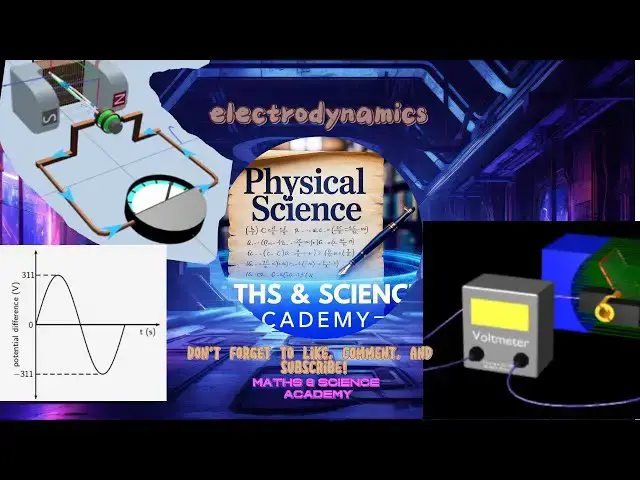V rms and I rms shorten
Show More Show Less View Video Transcript
0:07
Welcome to Maths and Science Academy. In
0:09
this video, we will be looking at part
0:11
four of electronamics.
0:25
In the alternating current AC generator,
0:28
the coil is connected to slip rings. The
0:30
current in the slip rings changes
0:32
direction when the current in the coil
0:33
reverses. Thus, alternating current AC.
0:36
The brushes collect the alternating
0:38
current AC from slip rings. The circuit
0:41
symbol for alternating current is this
0:43
one. Root mean skewer current is zero.
0:46
Root mean skewer potential difference is
0:48
also zero.
0:59
coil is rotated in a clockwise
1:01
direction.
1:03
The coil cut through the magnetic field
1:05
which is directed from north to south
1:07
pole of the magnet. V and I increase to
1:10
voltage V max and current. Immax when
1:13
the coil is horizontal and it cuts the
1:15
magnetic field perpendicularly.
1:17
Root mean skewer current is at maximum
1:20
mean skewer potential difference is at
1:22
maximum.
1:23
Maximum potential difference. Maximum
1:26
current and maximum power are related to
1:28
each other by the following equation.
1:30
Average power dissipated in any
1:32
component can be calculated in terms of
1:34
the arms values. The relationship V RMS=
1:39
2 IRMS * R is a useful equation when
1:42
working with electric circuits. The
1:44
alternating current is C cycle. Consider
1:47
simplified diagram below represents an
1:50
electric motor. Give a reason why the
1:52
section of the coil labeled BC in the
1:54
above diagram does not experience a
1:56
magnetic force whilst the coil is in the
1:58
position as shown. We can see from the
2:00
diagram there is an open switch. This
2:02
implies no current. Consider the graphs
2:05
of the current and potential difference
2:07
outputs of an AC generator. Calculate
2:10
the average power output of this
2:12
generator.
2:19
Thanks for watching.
#Engineering & Technology
#Mathematics
#Physics


